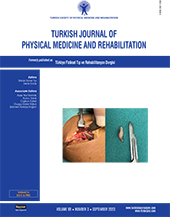A case of pseudogout attack after zoledronic acid treatment in primary hyperparathyroidism
2 Department of Internal Medicine, Gazi University Faculty of Medicine, Ankara, Turkey
3 Department of Internal Medicine, Division of Rheumatology, Gazi University Faculty of Medicine, Ankara, Turkey DOI : 10.5606/tftrd.2023.10135 Pseudogout (PG) is an inflammatory arthropathy that develops due to the accumulation of calcium pyrophosphate dihydrate crystals in synovial structures. Herein, we present a 59-year-old male patient with PG developed as a result of zoledronic acid (ZA) infusion, which was administered due to primary hyperparathyroidism. The patient with parathyroid adenoma was given ZA since the calcium level did not decrease despite intravenous saline and loop diuretic. One day after ZA administration, the patient had severe pain, fever, and swelling in joints. The radiograph showed chondrocalcinosis. Calcium pyrophosphate deposition were observed in the arthrocentesis fluid under polarized light. The patient`s symptoms regressed after anakinra and colchicine treatment. To the best of our knowledge, this is the first case report of a PG attack after ZA treatment for primary hyperparathyroidism. Additionally, there have been few cases of PG after bisphosphonate treatment for osteoporosis in the literature, signifying that more care should be taken when administering bisphosphonate therapy in patients with risk factors. Keywords : Hypercalcemia, hyperparathyroidism, pseudogout, zoledronic acid


















